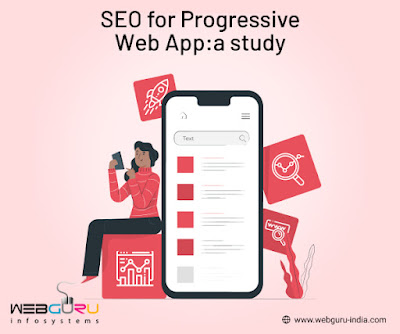We know that a Progressive Web App or PWA is an advanced form of a traditional website. From an interactive experience to push notifications - a PWA offers it all. Now, does it help SEO efforts? One thing is obvious - a PWA offers a superb user experience which is a crucial factor in enhancing site rank on the search engine. No wonder that the experts of SEO services readily approve of PWA right from its initiation. Today, we will explore some more aspects regarding how to improve SEO scores for PWA. Without further ado, let’s get started.
How to Improve SERP Ranking of a PWA
Responsive Design
Mobile-first indexing is already ‘in’ these days. Search engines prioritize responsive web design as it facilitates superb user experiences on multiple devices irrespective of screen size. Therefore, responsive websites have a competitive edge over other sites when it comes to winning a high rank on the SERP.
Here’s a suggestion by the top web developers in India. A progressive web app should have a responsive design. Elements like margins, fonts, paddings, buttons, etc. should dynamically scale to different viewports and resolutions.
Now, when images are scaled-up, they look bad and take a long time to load; thus impact the scroll performance. Further, the margins and paddings may not scale properly. Using the ‘scrset’ attribute can immensely help here.
This attribute fetches different resolution images leveraging screen display capabilities. Make sure to avoid using fixed-size fonts since it may impact the overall usability of the web app. The thumb rule for a progressive web app is that all the elements should be extremely flexible.
Loading Speed
Loading speed is a crucial aspect of search engine optimization. SEMRush states that a site should aim at loading within 2 seconds for enhanced SEO results. As you can understand, PWA aims at reaching it.
One of the major aspects of a progressive web app is its fast loading. It is known as progressive loading or lazy loading. A PWA defers the loading of some elements while prioritizing other elements to load first.
For instance, the developers may build a PWA in such a way that it loads HTML elements first and CSS elements later. Similarly, they may also enable the web app to load JavaScript by deferring the loading of CSS and HTML elements.
Further, a progressive web app can load all the crucial information in a single file instead of multiple small files. It helps the web pages to load faster. A PWA can comprehend what the users want first - for instance, the images and the texts displayed above the fold can be delivered first and the video or other elements present on below-the-fold may load later when the users scroll down.
Link Structure
External and internal linking plays a significant role in SEO. While external links pointing to your website reflects your site’s authority and credibility, internal links help to flow link juice from high authority webpage to low authority one and enable the search engines to better crawl and index all the pages. Therefore, it is important to focus on link structure.
The linking structure can be deeply impacted if you don’t use href attribute. The search engine bots will analyze anchor tags that have this attribute in place instead of just JavaScript links.
We know all these sound quite complex and require extensive tech expertise. You may engage professional dynamic web development services to get your site built by the experts.
JavaScript Rendering
For a PWA to be search engine friendly, the content available on every web page needs to be properly indexed. That’s because the search engines need to render JavaScript so as to view the content present in the PWA.
Now, the problem is that sometimes resources are randomly utilized due to compilation and execution. Therefore, search engines index JavaScript in two stages. The content rendered on the client-side is deferred until while the server-side content is rendered.
Now, many search engines (not Google) and social media networks like Facebook cannot process JS and fall back on HTML for support. Therefore, the servers need to be configured in a way that these can instantly respond to the requests for deep URLs. This principle applies to various core elements like content, meta tags, links, and images, and navigation.
Today’s advanced technology makes it possible for the JS framework to be configured in a way that allows uninterrupted server-side rendering or isomorphic rendering. With it, the PWA can run on the server and the browser.
Wrap It Up
As we have earlier stated, PWA offers a superb user experience with its dynamic nature. Following the above-stated strategies will help you to make the PWA more search engine friendly and improve ranking on the SERP.
Found the article useful? Share your thoughts with us.
